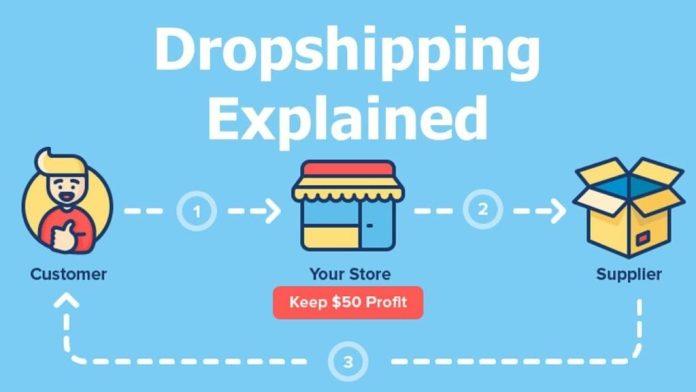Starting a dropshipping business can be an exciting venture. However, it requires careful planning and execution to ensure success. In this article, we will provide you with essential tips to help you navigate the dropshipping industry and achieve your entrepreneurial goals.
Table of Contents
Understanding the Basics of Dropshipping
Before diving into the dropshipping business, it’s crucial to understand its fundamentals.
Dropshipping is a business model where you sell products without having to carry any inventory. Instead, you partner with suppliers who fulfill orders on your behalf. This allows you to focus on marketing and customer service.
When it comes to dropshipping, the role of suppliers is vital. They are responsible for storing and shipping products to your customers. Working with reliable suppliers is essential as they ensure the timely delivery of quality products. Researching and finding trustworthy suppliers can be time-consuming but is crucial for the success of your dropshipping business.
Is dropshipping worth it? The short answer is yes, as it offers a range of advantages compared to other traditional business models. One of the major benefits of dropshipping is its low startup costs. Unlike traditional retail businesses, you don’t have to invest in inventory upfront. This makes it an attractive option for entrepreneurs looking to start their own business with limited funds.
Another advantage of dropshipping is the ability to run your business from anywhere. As long as you have an internet connection, you can manage your store and fulfill orders from the comfort of your own home or while traveling. This flexibility allows you to have a location-independent business and work on your own terms.
However, dropshipping also comes with its fair share of challenges. One of the biggest challenges is intense competition. Since the barrier to entry is low, there are numerous dropshipping businesses in various niches. Standing out from the crowd and attracting customers can be a daunting task. It requires a well-thought-out marketing strategy and continuous effort to differentiate yourself from competitors.
Another challenge is managing customer expectations. Since you are not directly involved in the fulfillment process, any delays or issues with the supplier can impact your customers’ experience. It’s crucial to communicate effectively with your suppliers and set clear expectations with your customers to minimize any potential dissatisfaction.
In conclusion, dropshipping offers several benefits, such as low startup costs and the ability to run your business from anywhere. However, it also comes with challenges, including intense competition and managing customer expectations. Understanding the basics of dropshipping and being aware of both the advantages and obstacles will help you make informed decisions and navigate the dropshipping journey successfully.
Setting Up Your Dropshipping Business
Starting a dropshipping business can be an exciting and lucrative venture. By leveraging the power of e-commerce, you can sell products to customers around the world without the need for inventory or shipping logistics. However, like any business, setting up a dropshipping business requires careful planning and attention to detail. In this guide, we will explore some key steps to help you get started on the right foot.
Choosing the Right Products to Sell
One of the key factors in dropshipping success is selecting the right products to sell. Conducting thorough market research is essential to identify profitable niches and trending items. By understanding the demand, competition, and profit margins of different products, you can make informed decisions that will maximize your chances of success.
When choosing products to sell, consider factors such as the target audience, seasonality, and market trends. For example, if you notice a growing interest in eco-friendly products, you might consider sourcing and selling environmentally friendly alternatives in various categories.
Furthermore, it’s important to strike a balance between popular products with high demand and items with less competition. While it may be tempting to jump on the bandwagon of the latest trend, competing in a saturated market can be challenging. By identifying niche products that have a dedicated customer base, you can carve out a profitable space for your business.
Finding Reliable Suppliers
Finding reliable suppliers is crucial for the smooth operations of your dropshipping business. After all, your reputation and customer satisfaction depend on the quality and timely delivery of the products you sell. When searching for suppliers, it’s essential to research and evaluate different options before making a decision.
Look for trusted suppliers with a track record of providing quality products and excellent customer service. Reading reviews and testimonials from other dropshippers can give you valuable insights into the reliability and professionalism of potential suppliers. Additionally, consider factors such as shipping times, return policies, and the ability to handle bulk orders.
Building a strong relationship with your suppliers is also important. Regular communication and mutual understanding can help ensure reliability and timely fulfillment. As your business grows, you may even be able to negotiate better pricing or exclusive deals with your suppliers, giving you a competitive edge in the market.
Creating a User-Friendly Website
Your website is the face of your dropshipping business, so it’s crucial to make it user-friendly and visually appealing. A well-designed website not only enhances the user experience but also builds trust and credibility with your potential customers.
Optimize your website for speed, navigation, and mobile-friendliness. Slow-loading websites can deter visitors and negatively impact your conversion rates. Ensure that your website is easy to navigate, with clear categories and search functionality to help customers find the products they are looking for quickly.
Product descriptions and images are also crucial elements of your website. Provide clear and detailed descriptions that highlight the features and benefits of each product. High-quality images from multiple angles can help customers visualize the product and make informed purchasing decisions.
Lastly, make the checkout process as seamless as possible. A complicated or lengthy checkout process can lead to cart abandonment. Implementing a secure and user-friendly payment gateway, offering multiple payment options, and providing clear shipping and return policies can help streamline the purchasing process and increase customer satisfaction.
By following these steps and continuously adapting to market trends, you can set up a successful dropshipping business that thrives in the competitive e-commerce landscape. Remember, building a business takes time and effort, so stay committed and focused on providing exceptional products and customer service.
Marketing Strategies for Your Dropshipping Business
Utilizing Social Media Platforms
Social media platforms are powerful tools for promoting your dropshipping business. Create engaging content and share it across various platforms to attract potential customers. Utilize influencer marketing, run targeted ads, and engage with your audience to build brand awareness and drive sales.
SEO Strategies for Dropshipping
Implement effective search engine optimization (SEO) strategies to improve your website’s visibility in search engine results. Conduct keyword research and optimize your product pages and blog content accordingly. Focus on creating valuable and informative content that resonates with your target audience.
Email Marketing and Retargeting
Build an email list of potential customers and utilize email marketing to nurture leads and drive conversions. Send regular newsletters, promotional offers, and personalized product recommendations to engage your audience. Implement retargeting campaigns to remind visitors about products they showed interest in, increasing the chances of a sale.
Managing Your Dropshipping Business
Handling Customer Service
Providing excellent customer service is crucial for building a loyal customer base. Respond promptly to inquiries and complaints, offer personalized assistance, and ensure timely and accurate order fulfillment. Use customer feedback to improve your products and services continually.
Managing Inventory and Orders
Keep a close eye on inventory levels to avoid stockouts and delays in order fulfillment. Implement inventory management systems to track stock levels and set up notifications for low-stock items. Streamline your order fulfillment process to ensure efficient and accurate shipping.
Dealing with Returns and Refunds
Returns and refunds are unavoidable in any business, including dropshipping. Establish clear return policies and communicate them to your customers. Efficiently process returns and refunds, and strive to turn negative experiences into positive ones by providing excellent customer service.
By following these essential tips, new entrepreneurs can navigate the dropshipping industry with confidence. Remember, building a successful dropshipping business requires commitment, adaptability, and continuous learning. Stay updated with industry trends and always strive to improve your customer’s experience. Best of luck on your dropshipping journey!








